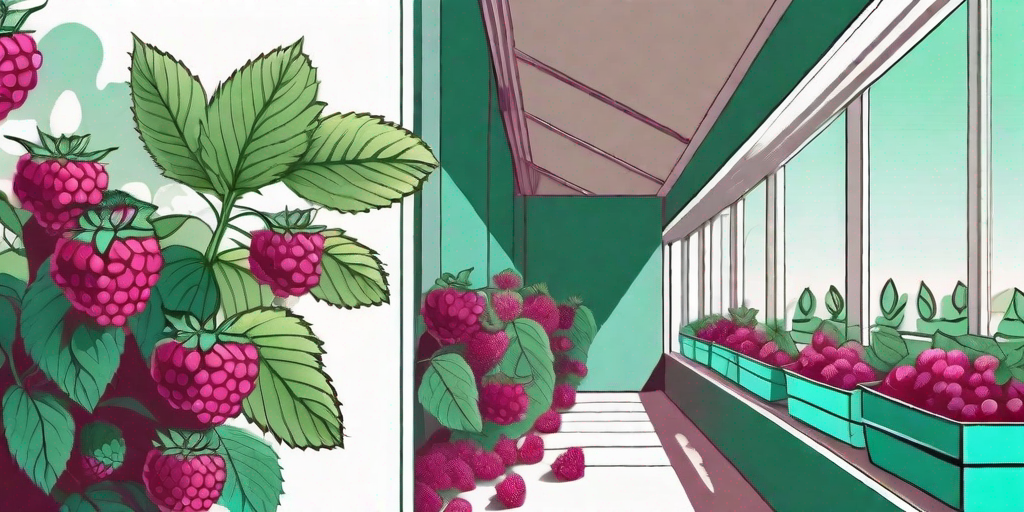
Ah, raspberries! Those sweet, tart, and perfectly poppable fruits that make any dessert a delight and any garden a treasure trove. But what if you don't have a sprawling backyard or a sunny patch of land to call your own? Fear not, dear reader, because today we're diving into the wonderful world of pot-grown raspberries. Yes, you heard it right. With a little bit of know-how and a dash of green thumb, you can enjoy a bountiful harvest of these ruby-red gems right in your own home, balcony, or patio. So, buckle up and let's get berry-ing!
The Berry Basics
Before we dive into the nitty-gritty of pot-grown raspberries, let's cover some berry basics. Raspberries belong to the genus Rubus, and they're part of the larger rose family. These perennial plants are known for their woody stems and delicious fruits. But the best part? They're surprisingly easy to grow, even for novice gardeners.
There are two main types of raspberries: summer-bearing and everbearing. Summer-bearing raspberries produce one large harvest in the summer, while everbearing raspberries produce two smaller harvests, one in the summer and one in the fall. For pot growing, everbearing varieties are usually the best choice, as they're more compact and easier to manage.
Choosing Your Raspberry Variety
When it comes to choosing your raspberry variety, it's all about your personal preference and your growing conditions. Some popular everbearing varieties include 'Heritage', 'Fall Gold', and 'Autumn Bliss'. These varieties are known for their sweet flavor and good disease resistance.
Keep in mind that different varieties may have different care requirements. So, make sure to do your research before making your choice. And remember, the best raspberry is the one that you'll enjoy growing and eating!
Getting Started with Pot-Grown Raspberries
Now that we've covered the basics, let's get down to business. Growing raspberries in pots is a fun and rewarding project, and it's easier than you might think. All you need are some pots, some soil, some raspberry plants, and a sunny spot. Oh, and a love for raspberries, of course!
Here's a step-by-step guide to get you started:
- Choose Your Pots: Raspberries need room to grow, so choose a pot that's at least 15 inches in diameter and 15 inches deep. Make sure the pot has good drainage to prevent waterlogging.
- Select Your Soil: Raspberries prefer well-draining soil with a pH between 6.0 and 6.5. You can use a high-quality potting mix or make your own by mixing equal parts compost, loam, and sharp sand.
- Plant Your Raspberries: Plant your raspberries in the spring after the danger of frost has passed. Place the plants in the pot, making sure the roots are spread out and the crown is level with the soil surface. Then, fill in with soil and water well.
- Place Your Pots: Raspberries need at least six hours of sunlight each day, so place your pots in a sunny spot. If you're growing your raspberries indoors, you may need to use grow lights.
- Care for Your Raspberries: Water your raspberries regularly, but avoid overwatering. Feed them with a balanced fertilizer every spring and again in mid-summer. Prune your plants in the winter to promote healthy growth.
Harvesting Your Homegrown Raspberries
After all that hard work, it's time for the best part: harvesting your homegrown raspberries! Raspberries are ready to harvest when they're fully colored and easily come off the plant. Remember, raspberries are delicate, so handle them with care.
Once you've harvested your raspberries, you can enjoy them fresh, use them in your favorite recipes, or freeze them for later use. The possibilities are endless, and the taste is unbeatable. There's nothing quite like the satisfaction of enjoying a sweet, juicy raspberry that you've grown yourself.
FAQs
Can I grow raspberries from seeds?
Yes, you can grow raspberries from seeds, but it's a long and complicated process. It's much easier to grow raspberries from plants or bare root stock, which you can buy from a nursery or garden center.
How many raspberry plants do I need?
For a family of four, two to three raspberry plants should provide a good harvest. However, if you're a real raspberry enthusiast, you might want to plant more!
Do I need to stake my raspberry plants?
Yes, raspberry plants need support as they grow. You can use a trellis, a stake, or even a tomato cage to support your plants and keep the fruit off the ground.
What pests and diseases should I watch out for?
Raspberries can be affected by a variety of pests and diseases, including aphids, raspberry beetles, and fungal diseases. Regular inspection and good plant care can help prevent most problems.
Conclusion
And there you have it, folks! Everything you need to know to grow your own pot-grown raspberries. It's a fun and rewarding project that's perfect for gardeners of all levels. So why not give it a try? You'll be enjoying your own sweet, juicy raspberries in no time. And remember, the only thing better than a raspberry is a homegrown raspberry!
Happy gardening!











